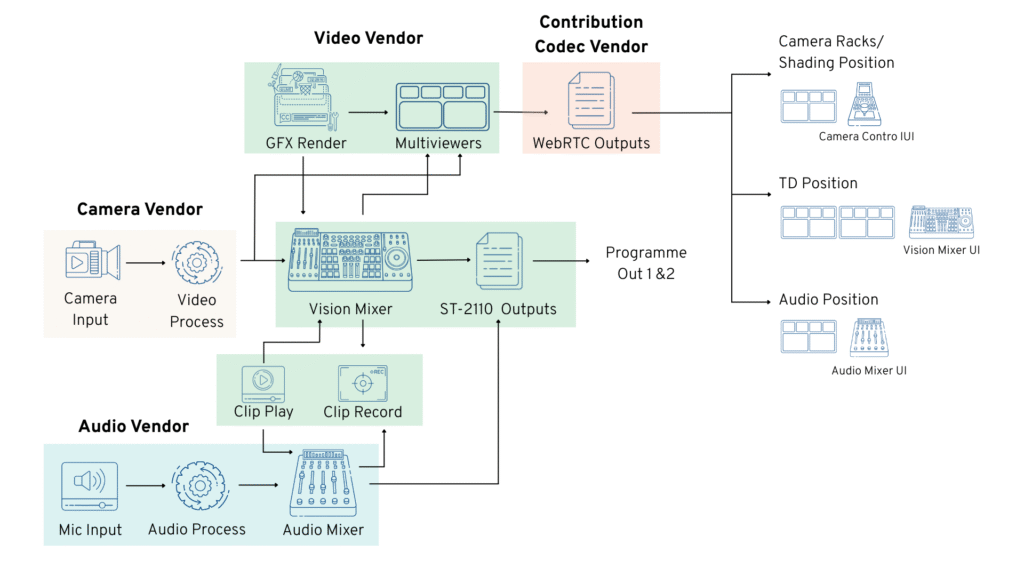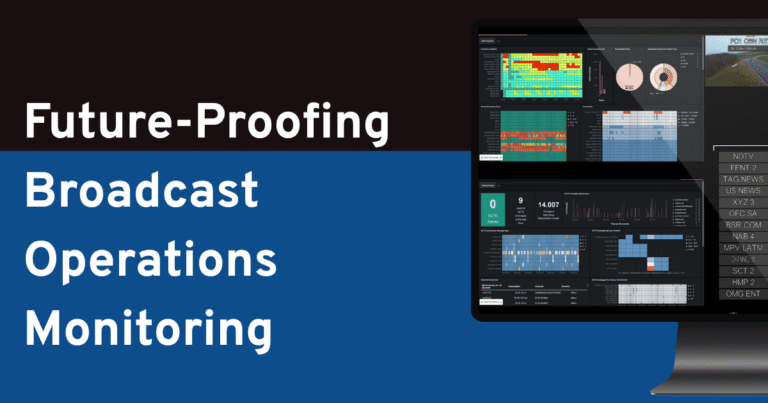As broadcasters move beyond legacy hardware and embrace cloud-native infrastructure, the Media Exchange Layer (MXL) is emerging as a key enabler for evolving IP media workflows. Defined within the European Broadcasting Union’s (EBU) Dynamic Media Facility (DMF) vision and built under the Linux Foundation, MXL enables real-time, in-memory media exchange between containerised production elements, helping broadcasters achieve flexibility without sacrificing performance
Why the Transition to MXL Makes Sense Today
Traditional ST 2110 pipelines were transformative, but their complexity is becoming a bottleneck in dynamic, software-first environments. As production scales across clusters and multi-cloud environments, orchestration and timing issues grow. Memory-level media exchange, enabled by MXL, allows software components to share video, audio, and metadata efficiently via shared memory, bypassing much of the IP packet stack to reduce latency and jitter. This accelerates deployment and lowers operational overhead, aligning with TAG’s zero-friction ethos.
Embedded in DMF: MXL as the “Virtual Cabling” of Today’s Workflows
The EBU’s DMF framework rethinks broadcast infrastructure by treating media processing as a network of microservices. MXL is the open-source “virtual cabling” that connects those services, providing interoperable, deterministic media exchange over POSIX APIs or RDMA. Instead of rewiring hardware or relying on vendor protocols, MXL enables virtual connections across compute nodes. The release of the MXL SDK in mid-2025 empowers developers and broadcasters to prototype and scale without the complexity of hardware-centric workflows.
Key industry stakeholders, including the BBC, CBC/Radio‑Canada, France TV, Bell Media, SVT, RTÉ, and VRT, are actively participating in the MXL initiative, alongside vendors such as AWS, NVIDIA, Lawo, Grass Valley, Intel, and Riedel. Their collaboration under the Linux Foundation umbrella aims to ensure the protocol becomes a global, vendor-neutral standard for real-time media exchange.
Real-World Momentum: From Lab to Deployment
Announced in April 2025 in collaboration with the Linux Foundation and NABA, the MXL Project has moved quickly from concept to code. Notably, Vendors and public broadcasters are already testing integrations, with interop tooling and event demos planned throughout 2025. Grass Valley and others have showcased MXL-based workflows at major trade shows, emphasising reduced hardware needs and simplified orchestration.

Behind the Scenes: Why MXL Will Resonate with Broadcast Engineers
During a recent TAG Talks podcast, Chief Architect Paul Briscoe summed up MXL’s potential in this way: “MXL turns production tools into apps that just run anywhere… on‑prem or cloud… enabling us to share tools across productions with minimal effort.”
This insight encapsulates MXL’s appeal: containers become lightweight, interoperable units capable of exchanging timed media grains asynchronously and more efficiently than conventional IP streaming. The result is not only reduced latency and better root‑cause visibility, but also more predictable performance in microservices-based live production pipelines.
That fluidity extends to hybrid environments; broadcast ingest and output can still rely on ST 2110 where needed, while internal media orchestration leverages MXL’s in-memory exchange, maintaining compatibility without complexity. Troubleshooting becomes clearer and faster, as tools and analytics can operate directly at the memory layer. This aligns with TAG’s core value of operational transparency.
Why Broadcasters Should Care, Act Sooner Rather than Later
Migrating core media functions to MXL-based architecture offers:
- Streamlined scalability and cost control: With containers replacing fixed-function hardware, production environments become easier to scale elastically across on-premises servers or cloud infrastructure. Soft provisioning replaces costly hardware expansion.
- Vendor-agnostic innovation: Broadcasters can compose workflows from in-house, vendor, or open-source components. MXL ensures these media building blocks interoperate without gatekeeping or expensive pre-testing.
- Faster diagnostics and troubleshooting: Memory-layer messaging offers immediate insight into media flow health, reducing the complexity of tracing packets across networks.
- Long-term adaptability: As AI-driven media functions, real-time analytics, and edge-based processing evolve, MXL lays the foundation for modular, composable, and software-first media systems.
Conclusion: Emerging Standards, Evolving Infrastructure, and Where to Learn More
The broadcast industry is entering a phase where workflows must adapt quickly without compromising quality or control. MXL, developed under the EBU and Linux Foundation, is helping production shift from prototype to practice. Broadcasters who engage now will be better prepared to deploy flexible, interoperable systems, from cloud-native studios to hybrid control rooms.





